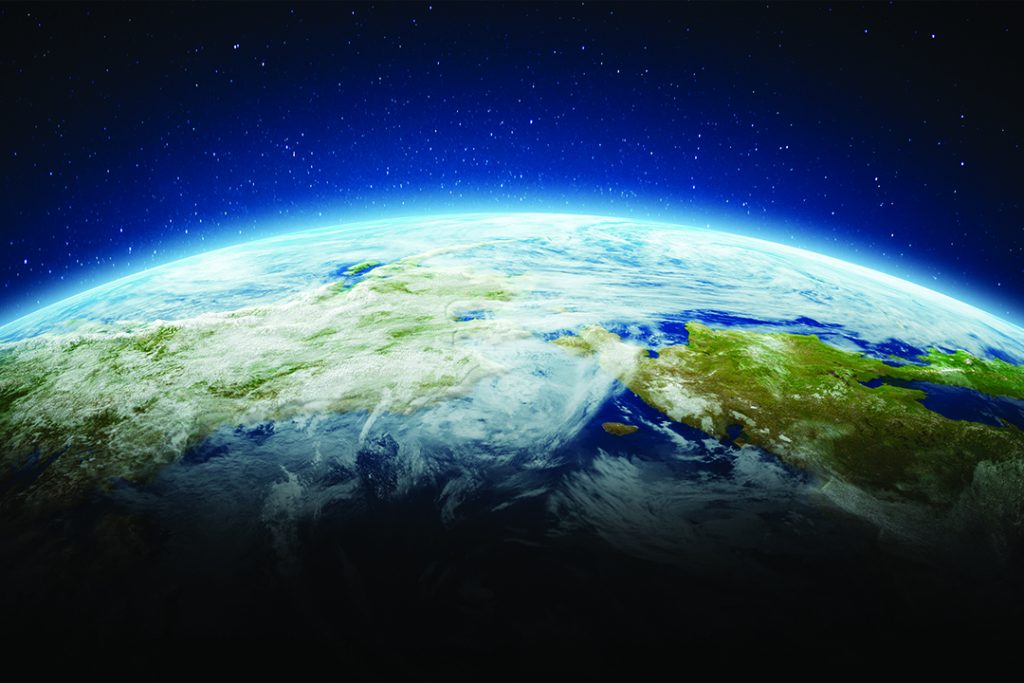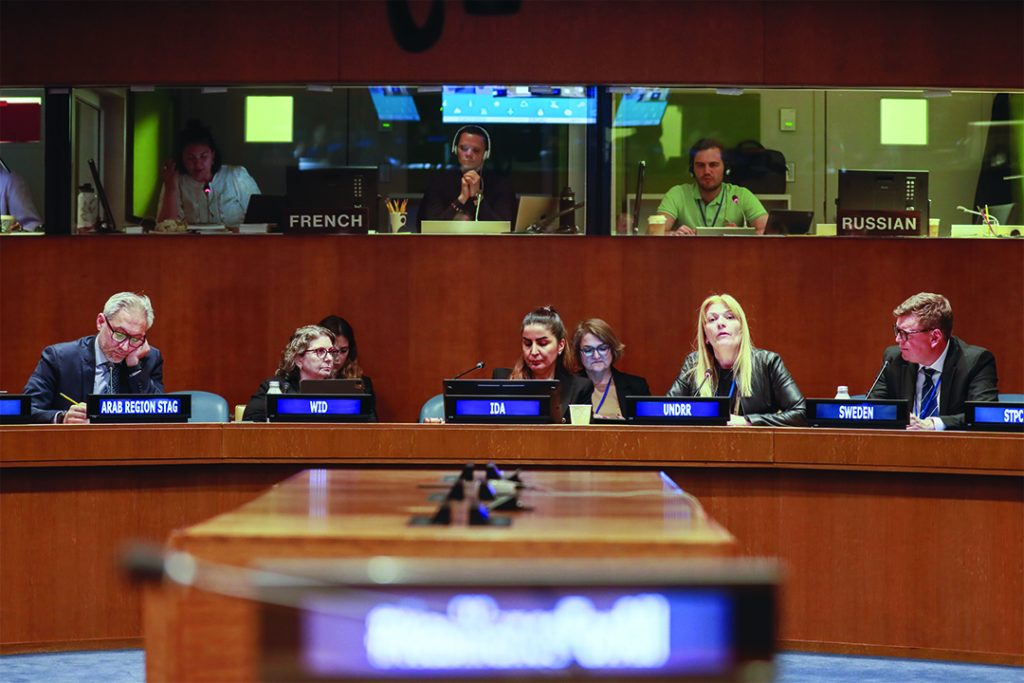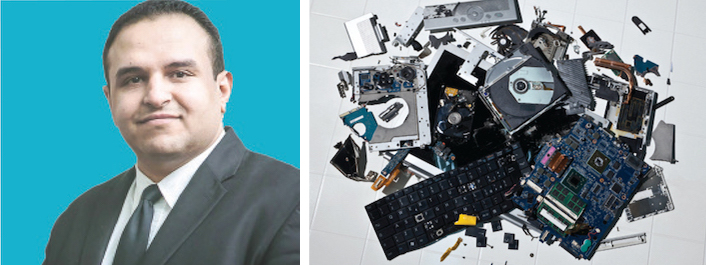Redoubling Risk Reduction

UN member states commit to accelerate resilience-building in the face of rising disasters linked to climate change.
Representatives from the United Nations (UN) member states midterm review meeting in New York last May have agreed on a greater commitment to resilience building. The renewed effort comes in the context of rapidly rising disaster risks, which the UN Office for Disaster Risk Reduction (UNDRR) is predicting will reach 560 disasters a year — or 1.5 a day — by 2030.
At the meeting, the UN member state thought leaders said resilience must be the foundation of the Sustainable Development Goals (SDGs) by addressing “resilience deficits” across all goals, ensuring a balance between people (social resilience), planet (environmental resilience), and prosperity (economic resilience). “If we are to achieve the SDGs, it is vital that we act to build resilience through our societies and governance models,” said Amina Mohammed, UN deputy secretary-general. “Otherwise, poverty and inequality will continue.”
The two-day high-level meeting included a midterm review of the Sendai Framework for Disaster Reduction 2015- 30, an international agreement among UN member states that maps out how to reduce global disaster losses. With climate change impacting more frequent, extreme, and unpredictable weather events, and geophysical hazards taking thousands of lives, the UNDRR says the Sendai Framework has become more relevant. The representatives agreed through a political declaration that a redoubling of efforts to reduce risks and build resilience is needed.
About UNDRR and the Sendai Framework

The United Nations Office for Disaster Risk Reduction (UNDRR) leads the coordination of disaster risk reduction in the UN system. It consists of five regional offices that work with national and local governments, intergovernmental organizations, civil society, and the private sector. UNDRR envisions a world where disasters no longer threaten the well- being of people and the future of the planet. It maintains that sustainable development cannot be achieved without building resilience.
The Sendai Framework for Disaster Risk Reduction (2015-30) aims to achieve a substantial reduction in disaster risk and losses by the year 2030. It works hand in hand with the 2030 Agenda for Sustainable Development and the Paris Agreement on Climate Change.
The political declaration calls for countries to embed risk reduction in all investments and development decisions and to bolster resilience, especially for the most vulnerable countries and groups. The Sendai Framework identifies investing in disaster risk reduction as one of its priority actions. In response, UNDRR has intensified its work in this area by helping countries access more financing for prevention, as well as helping the public and private sectors to de-risk investments and reorient financial flows for increased resilience.
The UNDRR focuses on:
- Identifying gaps in public spending by tracking/tagging disaster risk reduction (DRR) expenditures and conducting risk-sensitive budget reviews.
- Increasing transparency and data on private sector DRR actions and strategies and enabling investors to incorporate this information in their decision-making process.
- Developing new and innovative financing models for DRR investment, such as blended finance instruments and prevention/resilience bonds.
- Ensuring financial institutions and banks align their strategies, operations, and activities with the Sendai Framework by revising credit assessment practices.
- Leveraging the full potential of the insurance sector, not only for disaster risk protection but also for encouraging risk prevention.
“As risks are left unattended, disasters are materializing faster, surpassing our ability to cope, and with increasingly dire consequences for people, livelihoods, society, and the ecosystems on which we depend,” said Mami Mizutori, special representative of the secretary-general for disaster risk reduction and head of UNDRR.
“I can’t overemphasize the need to scale up implementation of the Sendai Framework for our own collective resilience,” agreed Mwanahamisi Singano, who represented the Stakeholder Engagement Mechanism Women and Gender Stakeholder Group and Women’s Environment and Development Organization. “Disasters are not natural and know no borders.”
During the New York meeting, the value of disaster risk reduction was brought home to attendees by Mustafa Kemal Kilinç, a student who survived the February earthquakes that struck Türkiye and Syria. “I am here today because our building did not collapse — because our contractor applied high standards to make our building earthquake resistant,” he said.
Prime Minister Mark Anthony Phillips of Guyana said that the main challenge is limited technical and financial resources available to invest in disaster risk reduction. “Financing is driven by reactive investment post disaster, all of which hinder investment,” added Tonga’s Prime Minister Siaosi ‘Ofakivahafolau Sovaleni. “We need more investment toward the underlying drivers of risk.”
Findings of the Midterm Review
During the meeting, the UNDRR released its midterm review, stating that eight years into its implementation, many disaster lessons have been ignored. The official report states, “Progress has stalled, and, in some cases, reversed.”Bright spots in the review include that 125 countries now have national strategies for disaster risk reduction and that mortality rates are lower during disasters than they were, thanks to improvements in early warnings in some countries.
However, half of the countries still do not have multi-hazard early warning systems, and the number of affected people is increasing. “This midterm review is our last chance before 2030 to collectively change course,” said Csaba Kőrösi, president of the UN General Assembly, who chaired the high-level meeting. “Starting today, I challenge you to account for risk in every decision that impacts how we live, consume, build, and invest.”
“As we look to the 2023 SDG Summit and the Summit of the Future, it is time to make a dramatic shift from managing disasters to managing risk and investing in prevention. People are depending on it,” said Mohammed. “We need to work together — member states, investors, business, civil society, and the entire UN system — to ensure the clauses contained in this midterm review are woven across all of our agendas.”




Responses